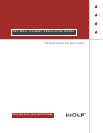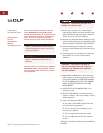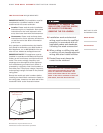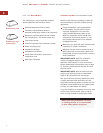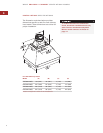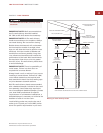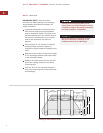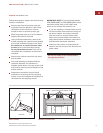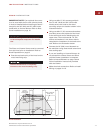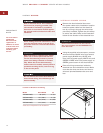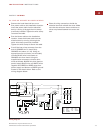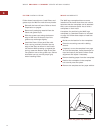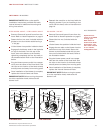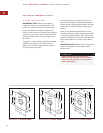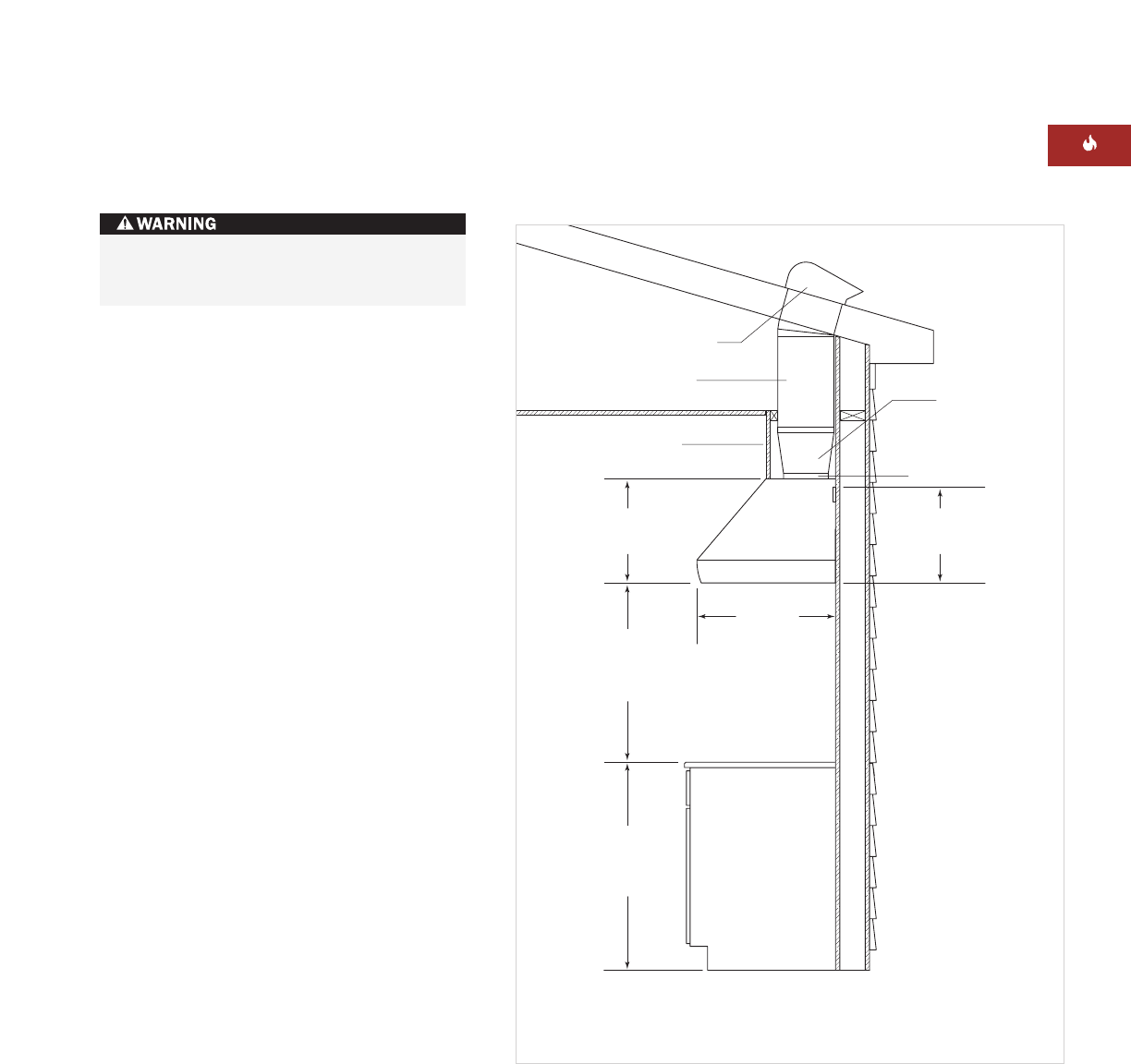
7
Dimensions in parentheses are in
millimeters unless otherwise specified.
INSTALLATION INSTRUCTIONS
DUCTWORK INSTALLATION
THROUGH ROOF
24" (610)
DEPTH OF HOOD
ROOF CAP OR REMOTE BLOWER
10" (254) ROUND DUCT
SOFFIT OR CABINET
OR DUCT COVER
NOTE: VERTICAL DISCHARGE ONLY FOR PRO WALL CHIMNEY HOODS.
VERTICAL DISCHARGE
TRANSITION
14"W x 9
3
/4"D TO 10" ROUND
7"H (INCLUDING FLANGES)
30" TO 36"
(762–914)
COUNTERTOP
TO BOTTOM OF
VENTILATION HOOD
36" (914)
STANDARD
FLOOR TO
COUNTERTOP
HEIGHT
18" (457)
HEIGHT
OF HOOD
16
3
/4" (425)
TOP OF WOOD
MOUNTING STRIP
WALL HOOD
Ducting for wall chimney hoods
INSTALL DUCTWORK
IMPORTANT NOTE:
Wolf recommends that
the Pro wall chimney hood be installed
30" (762) to 36" (914) above the countertop.
IMPORTANT NOTE:
All Pro wall chimney
hoods must exhaust to the outdoors. Always
use metal ducting. Do not use flex ducting.
Decide where the ductwork will run between
the hood and the outside. A straight, short
duct run will allow the hood to perform more
efficiently. Limit the number of elbows and
transitions to as few as possible. Long duct
runs, elbows and transitions will reduce the
performance of the hood. Wolf recommends
the maximum linear duct run be no greater
than 50' (15 m). Pro wall chimney hoods have
a vertical discharge.
IMPORTANT NOTE:
There is a possibility of
noise issues, if there is a short duct run
coupled with a remote blower.
Always install a roof or wall cap if you are not
installing a remote blower. Connect 10" (254)
round metal ductwork to the cap and work
back towards the hood. Use duct sealing tape
on joints between ductwork sections.
Wolf Pro wall chimney hoods come standard
with a backdraft damper included in the transi-
tion assembly. Local codes may require the
use of an additional backdraft damper. Contact
your local HVAC professional for specific
requirements. In cold weather installations, a
backdraft damper is necessary to minimize the
backflow of cold air into the room.
Local building codes may require the use of
make-up air. Consult your local HVAC profes-
sional for specific requirements in your area.
To reduce the risk of fire, use only metal
ductwork.



